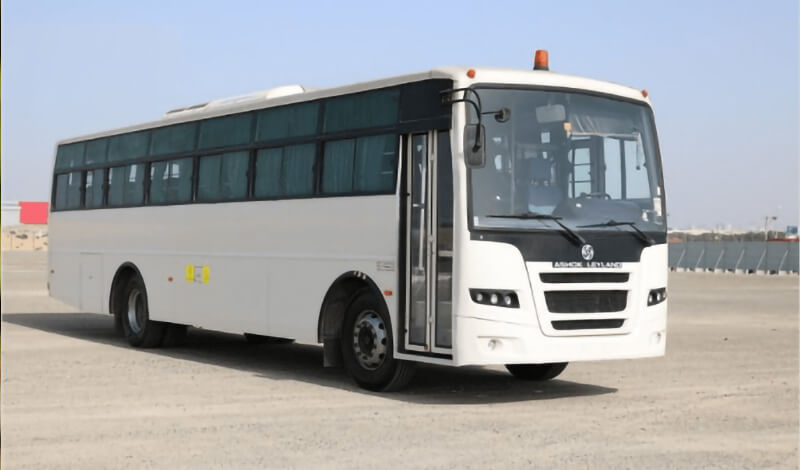School bus transportation is vital for ensuring students can attend school, regardless of their location or socioeconomic status. Beyond simply providing a ride, school buses can improve student access to education, promote safety, and support a more inclusive learning environment. In this article, we’ll explore how bus transportation for schools can be optimized to meet the needs of modern schools and their students.

The Importance of Student Access to Education
Before delving into how bus transportation improves student access, it is important to understand the broader concept of student access to education. Access to education refers to the ability of students to attend school regularly and participate in the educational process without barriers. Several factors influence access to education, such as proximity to the school, socioeconomic status, availability of public transportation, safety, and even cultural norms.
- Ensuring Equity for All Students
One of the most significant ways that bus transportation can improve student access is by ensuring equity. In many parts of the world, children in lower-income or rural areas face barriers when it comes to attending school. These barriers often include long travel distances, lack of safe transportation options, and financial constraints. For these students, a reliable school bus system is not just a convenience—it’s an essential lifeline to education.
- Reducing Absenteeism and Promoting Consistent Attendance
Regular attendance is crucial for academic success, and one of the best ways to improve attendance is through reliable bus transportation. School bus services offer a consistent and dependable way for students to travel to school, ensuring they arrive on time and without delays. This is particularly important in communities where other transportation options may be limited or inconsistent.
When students have access to school buses, they are less likely to miss school due to transportation-related issues. This consistent attendance helps improve student outcomes, as they are able to participate fully in class, receive timely interventions when needed, and stay engaged with their learning
- Increasing Access for Students with Disabilities
Another important way that bus transportation for schools can improve student access is by providing accommodations for students with disabilities. The Americans with Disabilities Act mandates that school districts offer specialized transportation services for students with physical, cognitive, or emotional disabilities. This may include wheelchair-accessible buses, buses with extra space for mobility devices, or buses staffed with aides who can assist students during their commute. Ensuring these accommodations is key to making bus transportation for schools inclusive and accessible to all students.

- Promoting Safe Travel to School
Safety is a key concern when it comes to student transportation. School buses are among the safest modes of transportation available for students, providing peace of mind for parents and guardians. School buses are equipped with safety features such as seat belts, flashing lights, and stop arms, which help protect children from traffic accidents.
- Addressing Transportation Challenges in Rural Areas
In many rural communities, school bus transportation is the only viable option for getting students to school. In these areas, public transportation options are limited, and students may face long distances to travel. Without school buses, these students may not be able to access the education they need to succeed.
- Enhancing Community Engagement
Bus transportation can also serve as a tool for fostering greater community engagement. By providing transportation to school events, extracurricular activities, and field trips, buses enable students to participate in school life outside of regular school hours. This is especially important for students who may not have access to other forms of transportation.
- Supporting Educational Equity Through After-School Programs
After-school programs are essential for providing students with enrichment opportunities, tutoring, and a safe place to go after the school day ends. However, many students face challenges accessing after-school programs due to transportation issues. Without reliable bus transportation for schools to get home after extracurricular activities or academic support sessions, many students miss out on these important opportunities. Providing efficient bus transportation for schools ensures that all students have the chance to participate in these valuable programs.
- Streamlining and Optimizing Bus Routes with Technology
Advances in technology can help improve the efficiency of school bus transportation, making it even easier for students to access education. For example, GPS tracking systems and route optimization software can help streamline bus routes to reduce travel time, avoid traffic, and ensure that buses run on time. This improves the reliability of school transportation and helps students get to school faster, leaving more time for learning.

Conclusion
Bus transportation services are essential for improving student access to education, ensuring safety, and fostering inclusivity. By optimizing routes and providing equitable services, schools can enhance attendance and academic success for all students. At icr.ae , we are committed to delivering safe, efficient, and innovative transportation solutions that help students reach their full potential. Trust ICR.AE for dependable school bus services that support education and community growth.
Contact:
For more information or inquiries, feel free to contact us at 01553998199. Our team at ICR.AE is ready to assist you with all your transportation needs.



Leave a comment